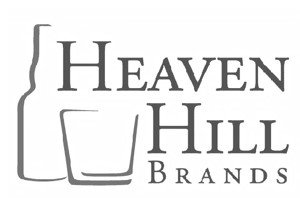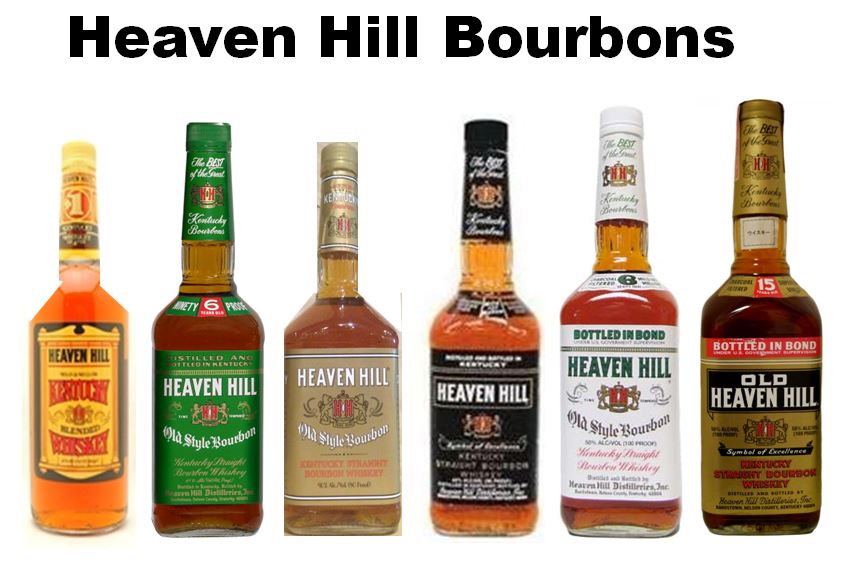
The Shapira Brothers
Photo of the Shapira Brothers courtesy of Heaven Hill
The story of the Shapira brothers must begin with their father, Max Shapira (full name Mendel “Max” Lieb Shapira), who set sail for America around 1888 for a new life in America. Raised in a port town in Lithuania (which was then part of Russia), Max was the Jewish son of a poor family. At that time, Lithuania was severely depressed economically. Max arrived in the United States in New Orleans but moved to a suburb of Louisville, Kentucky, called New Haven, in about 1920. His first job in Kentucky was as a door-to-door salesman peddling small houseware items like needles, thread, thimbles, and lotions. He started by walking on foot with only a backpack worth of merchandise. Within time, he added a horse and then a small traveling trailer. Then, in the middle of the most difficult economic times of the depression as well as Prohibition, he opened a brick-and-mortar store just outside Louisville, which he called simply, “The Louisville Store.”
Max was a shrewd businessman and always reinvested a substantial part of the profits back into the business to help it grow. Max met and married Annie Berlin around the turn of the century. He was very happily married and promptly had six sons, five of whom lived to adulthood. As each of those boys grew up, they graduated from school and worked as an apprentice with him: David (1913-1987), Ed (1906-1982), Gary (1901-1960), George (1904-1996) and Mose (1914-1971) were each set up in their own identical “Louisville Store” to run and to make a living by keeping a part of the profits.
Initially, all the stores were within 100 miles of the original location, but the business continued to grow and prosper even during the depression. Eventually, it became a big chain of twenty junior department stores, all over Kentucky, Southern Indiana, and Southern Ohio, branded as both “The Louisville Store" and later, “The People’s Store”. The store’s main products were clothes like shirts, pants, dresses, socks, and suits, but they also had many other items for sale, from household items to farm supplies and implements to non-perishable food items like pickles in a barrel. Each of the Shapira boys was doing well by following the exact business model their father laid out for the store and for their families.
Ed Shapira’s Louisville Store was located in Bardstown, Kentucky, which, before Prohibition, was known for its vast number of whiskey distilleries. When Prohibition ended in 1933, everybody in the area expected that they could begin their own successful bourbon business and make money. Five local Bardstown businessmen, including Ed and David Shapira and Mr. Joseph L. Beam (Jim Beam’s cousin), were no different in their dream. Soon, they put their heads and their wallets together and started a distillery. The Shipira’s initial investment was 40% of the total, and equaled $17,500 (Mr. Joe had a 20% share of $8,750) into a company that had no still, no warehouses, no brand names, and no inventory. Nevertheless, on December 13th, 1935, the first barrel was filled at what would become ‘Heaven Hill Distillery’. The name was taken from William Heavenhill, a farmer who previously owned the land where the distillery was built, and the name stuck.
The first whiskey sold from this distillery, with Mr. Joe’s son Harry Beam as their first Master Distiller, was a 2-year-old brand called Bourbon Falls. This offering was released just to bring in some cash flow to help continue funding the distilling process. At that point, none of the partners were earning a penny on their investment. The other investors, including Mr. Joe, soon ran into financial problems unrelated to Heaven Hill and claimed they would have to sell their shares or shut the business down completely. Stuck in the position of either having to liquidate everything for pennies on the dollar or shore up their investment with new capital, Ed went to all his other brothers and asked them to join him. Around 1939, the five Shapira brothers (David, Ed, Gary, George, and Mose) all agreed to invest another $20,000 to buy out Mr. Joe and the other partners.
After parting ways with Mr. Joe and with Harry Beam, they had to find someone who knew distilling, since none of the Shapiras knew very much about the actual process. So Ed and David Shapira, who had been the active partners onsite, went straight to the top of the Bourbon world and hired Park Beam, Jim Beam’s brother, as their second Master Distiller.
In 1940, a premium bottle of five-year-old bourbon was released called “Old Heaven Hill Bottled-In-Bond.” Bolstered by an inexpensive price, the guarantee of quality with the “Bottled-in-Bond” promise, and its distribution chain of ready-made stores, the company’s sales of Old Heaven Hill went through the roof. Within a few years, this gold-labeled brand became the number one selling bourbon in the entire state of Kentucky.
Business was booming, and the company continued its rapid growth as the Shapiras ran the business side of things, and Park Beam, now with his son Earl Beam, ran the production part of the distilling operation. In 1957, Heaven Hill under the Shapira’s stewardship and Earl’s whiskey expertise, introduced “Evan Williams” Kentucky Straight Bourbon. This brand would go on to become the world’s #2 selling bourbon, and quickly became and Heaven Hill’s flagship brand.
Two of the sons of the five Shapira brothers followed in their collective fathers’ footsteps. Max L. Shapira (1943-present), Ed Shapira’s son, came aboard at Heaven Hill at the age of 28 in 1971. Max had graduated with his Masters in Business Administration from Harvard and worked on Wall Street for five years before coming back home to join the firm. Max became the first member of all the Shapira grandchildren to join the family business. His cousin Harry Shapira (1947-2013), who was David Shapira’s son, would also go to work for Heaven Hill two years later. Harry Shapira helped create and design the company's two new modern attraction centers: the Bourbon Heritage Center in Bardstown and the Evan Williams Bourbon Experience, set in the heart of Louisville’s "Whiskey Row."
The longest surviving of the five Shapira brothers was George Shapira, who passed away in 1996. At that time, Max took over as President and Harry as Executive Vice President at Heaven Hill. The Shapira Brothers were inducted posthumously into the Bourbon Hall of Fame as a collective group in only its second class in 2002.
Contributed by Colonel Craig Duncan, Columbia, Tennessee
1.) Heaven Hill Kentucky Blended Whiskey;
2.) Heaven Hill Old Style Bourbon (Green Label) 1990’s most Popular Bar Brand
3.) Heaven Hill Old Style Bourbon (Gold Label)
4.) Heaven Hill Black Label
5.) Heaven Hill Old Style Bourbon Bottled-in-Bond (White Label)
6.) Old Heaven Hill Bottled-in-Bond (Gold Label) Most Popular Bourbon n Kentucky in 40’s and 50’s
1.) William Heavenhill 15 year-old Cask Strength (2015) 144.6 Proof (Green Label) 4th Edition
2.) William Heavenhill 18 year-old Small Batch (2013) 127.6 Proof (White Label) 2nd Edition
3.) William Heavenhill Bottled-in-Bond Small Batch (2014) 11 year-old, 100 Proof (Red Label) 3rd Edition
4.) William Heavenhill 14 year-old Single Barrel (2017) 115 Proof (Blue Label) 5th Edition
5.) William Heavenhill 16 year-old Small Batch (2018) 106 Proof (Black Label) 6th Edition






